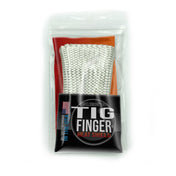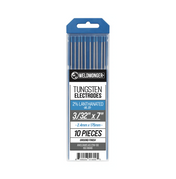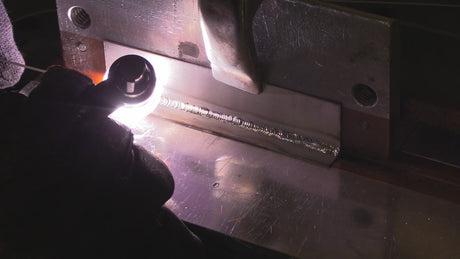Understanding the 304L Stainless Steel Grade
What Does the “304L” Stand For?
Let’s break down the name “304L.” The number 304 identifies the basic grade, which belongs to the austenitic family.
The “L” stands for “low carbon.” This seemingly small difference has a major impact.
By reducing the carbon content (typically to a maximum of 0.03%), 304L minimizes the risk of carbide precipitation during welding...at least compared to regular 304 stainless. That means better weldability and less susceptibility to corrosion in the heat-affected zones of welds.
In simpler terms? If you need stainless steel that can be welded without cracking or losing its corrosion resistance, 304L is often a good choice.
Check out our line of TIG Cup Kits here
Chemical Composition of 304L Stainless

You might notice that the chromium is between 18 and 20% and the nickel is between 8 and 12%.
this is why 304L stainless is often referred to as 18-8 stainless steel.
Filler metal for TIG welding 304L stainless
ER308L is the recommended filler rod for TIG welding 304L stainless steel.
Here is a handy stainless filler metal chart for many different grades of stainless steels
Why 304L Stainless Steel Is So Widely Used
Corrosion Resistance
One of the most significant reasons 304L is the go-to stainless steel grade is its excellent resistance to a wide range of atmospheric environments and many corrosive media. In fact, 304L’s low carbon content offers better resistance to intergranular corrosion—a type of degradation that occurs in the grain boundaries of the material after exposure to high temperatures, especially during welding.
Unlike higher carbon grades, 304L doesn’t form chromium carbides easily, which can rob the alloy of its corrosion-fighting chromium. That’s why industries trust 304L for structures that must endure humid, chemical-rich, or variable environments.
Weldability and Formability
Weldability is where 304L truly shines. Thanks to its low carbon content, 304L can be welded without any need for post-weld heat treatment. That’s a big deal in manufacturing and construction, where time and cost savings are critical. It’s also easily formable, which makes it suitable for everything from tubing to complex shapes used in appliances or architectural designs.
If you’ve ever seen sleek railings, kitchen counters, or escalator panels, chances are, 304L was involved. It bends, molds, and shapes without losing its strength—a metalworker’s dream.
Availability and Cost-Effectiveness
Here’s the clincher: 304L stainless steel is both abundant and affordable. Because it doesn’t require high levels of expensive elements like molybdenum (as seen in 316L), it’s easier and cheaper to produce. Combine that with its widespread application potential, and you’ve got a material that’s not only efficient but also economical.
304L is also readily available globally, which reduces lead times and simplifies sourcing for manufacturers and contractors. It’s the stainless steel you can depend on without blowing your budget.
Limitations of 304L Stainless Steel
Just because 304L works great in general-purpose applications doesn’t mean it’s the right fit for every job. Using it in the wrong conditions—like marine environments or high-heat applications—can lead to premature failure, safety risks, and expensive replacements. Knowing these limitations helps engineers, builders, and designers make smarter, safer decisions.
When Is 316L Stainless Preferred Over 304L?
If your application involves seawater, de-icing salts, or acidic conditions (like sulfuric, hydrochloric, or acetic acid), 316L is the way to go. It’s commonly used in environments where corrosion isn’t just a possibility—it’s inevitable. See article on TIG welding 316L stainless here







